Progress report - December 2024
Hello! Welcome to the first ever progress report for Elegy, and a happy New Year! As I'm writing this, I hear fireworks non-stop. I've been writing very summarised versions of these on Knockout for quite some time, but here I can go all out.
I'll be talking about all the stuff that happened in 2024. So, let's go chronologically.
January 2024
So, January was a very important month. That's when Elegy split off from Godot. I had to add various, various maths types and utilities to Elegy.Common.Maths, and Elegy.Launcher2 was born. Here's some important commits from back then:
- Engine: prepare for the new launcher
- MapCompiler: catch up with all this
- Remove Godot-specific extensions and EntryPoint
- Engine: upgrade to .NET 8
Elegy used to be on .NET 6 before all this! Right now it's on .NET 8 and, while .NET 9 looks attractive now, I think I'll stick to 8 until .NET 10. We'll see. But right now, I don't see much of a need to upgrade.
This is also when platform backends were introduced, so you could plug in any windowing/input backend if you implemented Silk.NET's interfaces for it! Back then it was just SDL2, but I've since added Eto.Forms and am working on Avalonia integration.
A ton of stuff from TestGame (now the game SDK) was also removed, because it just used so much of Godot's API, understandably so.
February 2024
Truth is, when this switch happened, Elegy was basically left without a renderer, physics, audio, UI and so on. I began doing work on the render backend, the back-then render frontend idea (now-render styles), Eto.Forms integration (GuiLauncher) and so on.
I rendered a test triangle just to make sure stuff works and windows can be resized without Vulkan yelling at me:
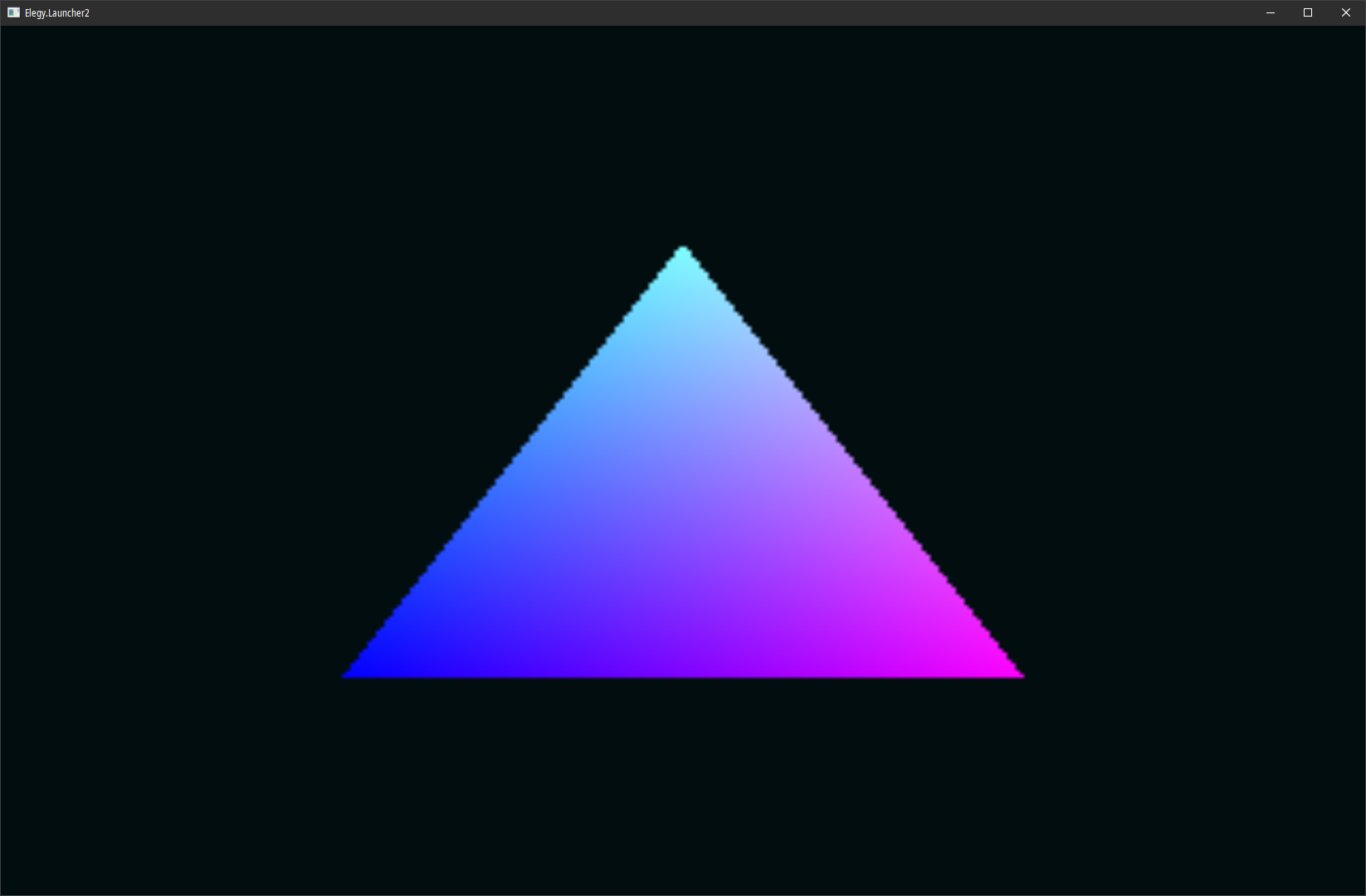
Name's Triangle. Vulkan Triangle.
The no-godot branch was finally merged on the 17th of February 2024. The renderer was starting to take shape.
March 2024
This was another major month for Elegy. This is when Elegy.ShaderTool was born, we got Standard (renders 3D surfaces) and Window (renders framebuffers) shaders, and when the old material templates idea started being implemented!
Work was done to enhance the build scripts, and it became a lot easier to work with the engine. Right now, it's still not entirely there. I'd like to build a project wizard eventually.
Most importantly, this was the month of the "big reorganisation", when Elegy got split up into modules. Before, it was just one big Elegy.Engine.dll, but now there are modules like AssetSystem, PluginSystem etc.
Other than that, I wrote a glTF model loader, added IPluginCollector, implemented a quadtree, cemented the asset system (model, texture & material
management), and then I implemented a dummy & default render frontend.
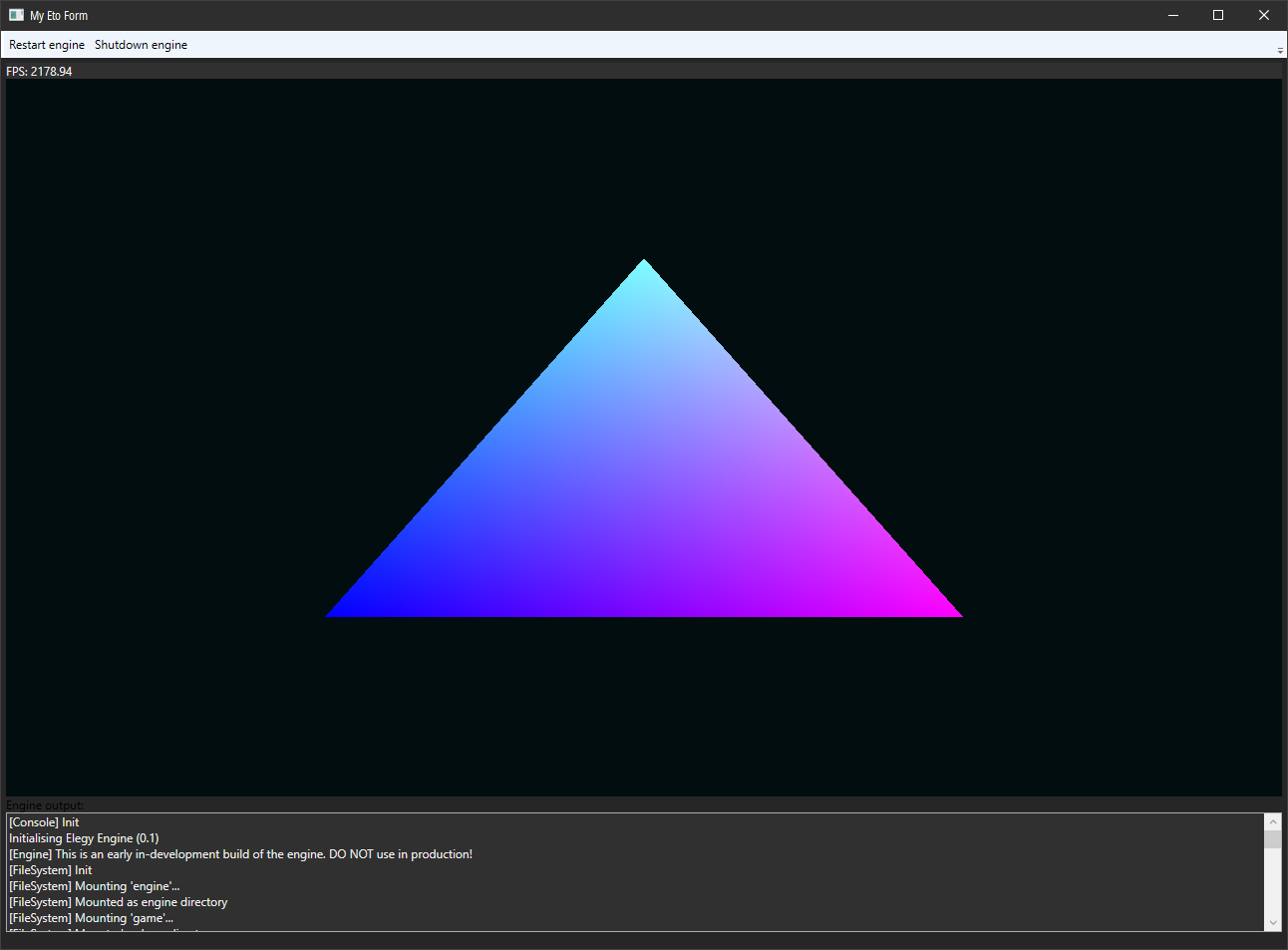
Eto.Forms, Silk.NET and Elegy walk into a fence.
Soon after doing so, I realised I made a huge mistake in designing the render frontend API. Renderable objects, render meshes, render textures etc. were all interfaces, and each render frontend had to implement their own. Oh, the misery. Also every time I changed the API, because it was rapidly changing, I had to edit the interface, the dummy implementation and the existing implementation. Sometimes several implementations, e.g. the render frontend + mesh entity or whatever.
On the 30th of March, I also added fennecs, a delightful C# ECS library, as well as a "scratchpad" where I could do some experiments.
April 2024
Common got upgraded to .NET 8 when Amara pointed it out. Elegy.Bootstrapper was born (now Elegy.Framework), and I went wild with source generators. The Engine API became static, and we got our own IView as to not rely on Silk's.
Elegy.AppTemplate got added, Bootstrap got renamed to Framework, a new folder structure was set up (all engine systems went into "Modules"), and package info was added to all engine modules.
ArrayMesh got added, as well as PngImageLoader, and on the 14th of April, RenderStandard (the default render frontend) was able to load meshes and materials. No proper world renderer or anything yet though, I was just able to render an orientation cube.
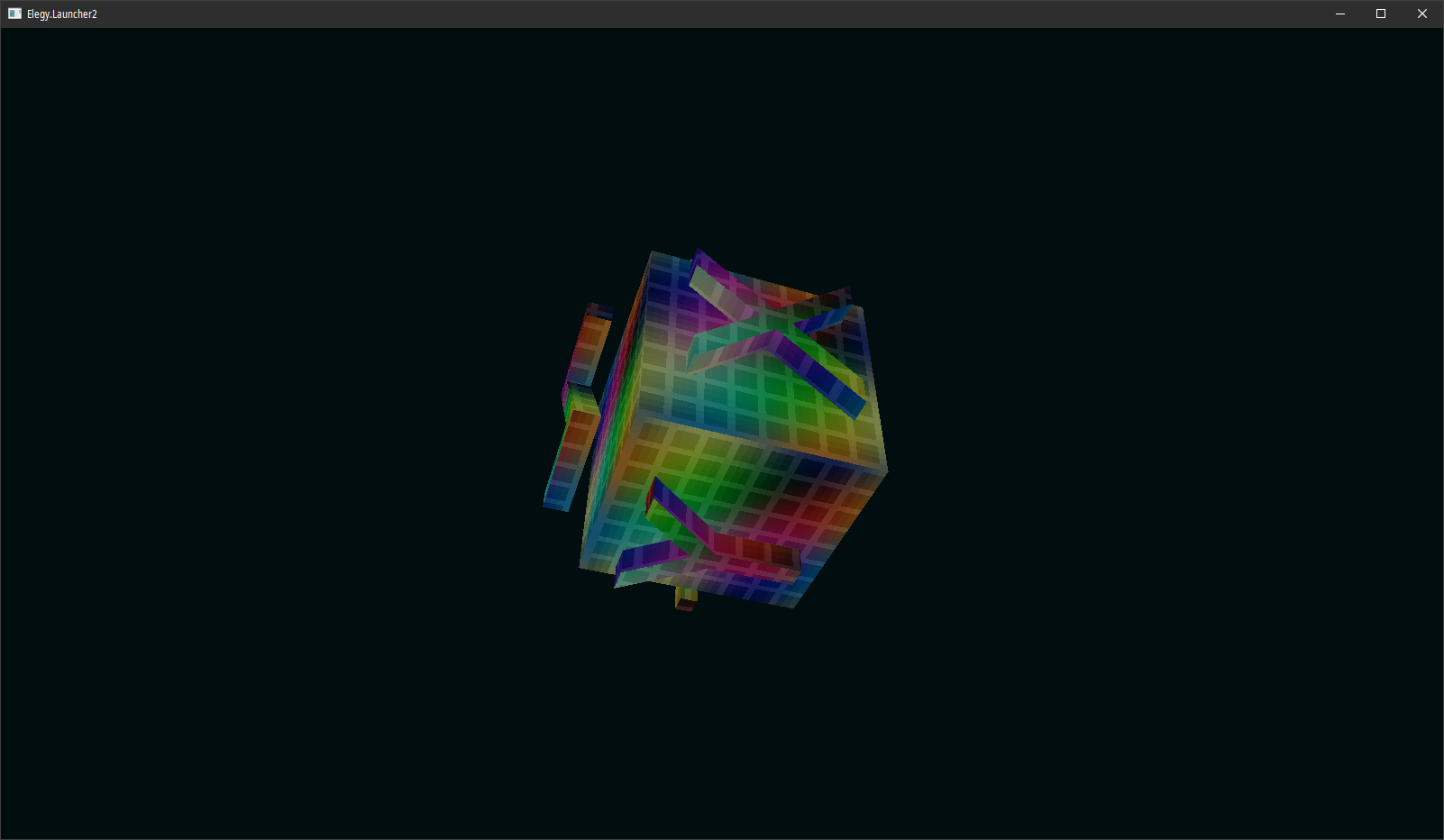
It's the missing texture texture!
On the 22nd of April, Amara adapted Elegy.MapCompiler to use engine systems. This was a huge deal because we could finally get rid of a couple imitating systems in the compiler, and directly use the real deal!
May 2024
Tons, tons of fixes and improvements to the material template system, and the engine was finally able to render meshes. Materials could now have global, per-instance, per-view and builtin material parametres. 2D support was added to Mesh, and I came up with the initial concept of a world renderer.
On the 28th of May, we got rid of the whole render frontend API and moved all the render resource creation over to RenderSystem. Thank goodness. IRenderStyle was soon added. Soon enough, Elegy.ShaderTool got refactored as well as how material parametres worked, and binding material parametres to GPU resources internally became a ton simpler.
June 2024
RenderFrontend-related stuff was completely gone at this point. Elegy.RenderWorld got added (now Presentation.Renderer in the game SDK), and various useful methods were added to things, like Render.GetCurrentWindowView.
Lots of bugfixes later, I also added the ability to load plugins' dependencies. This way, the game DLL was able to load fennecs, BepuPhysics later etc. Very big update.
I started rewriting the developer console application, and revived the old ECS scratchpad. The entity system idea took form. The TrenchBroom config got updated for v2024. Looks like in 2025 I'll have to do the same for TrenchBroom v2025, given that it's changed a few keywords now.
Near the end of that month, I was also messing around with Docusaurus! That's how this website came to be, eventually.
July 2024
A "tool mode" was added to the engine config, so it can optionally not load app plugins. Lots of changes were made to the map compiler, and matrix maths were added so we could create world matrices for entities and view matrices for cameras.
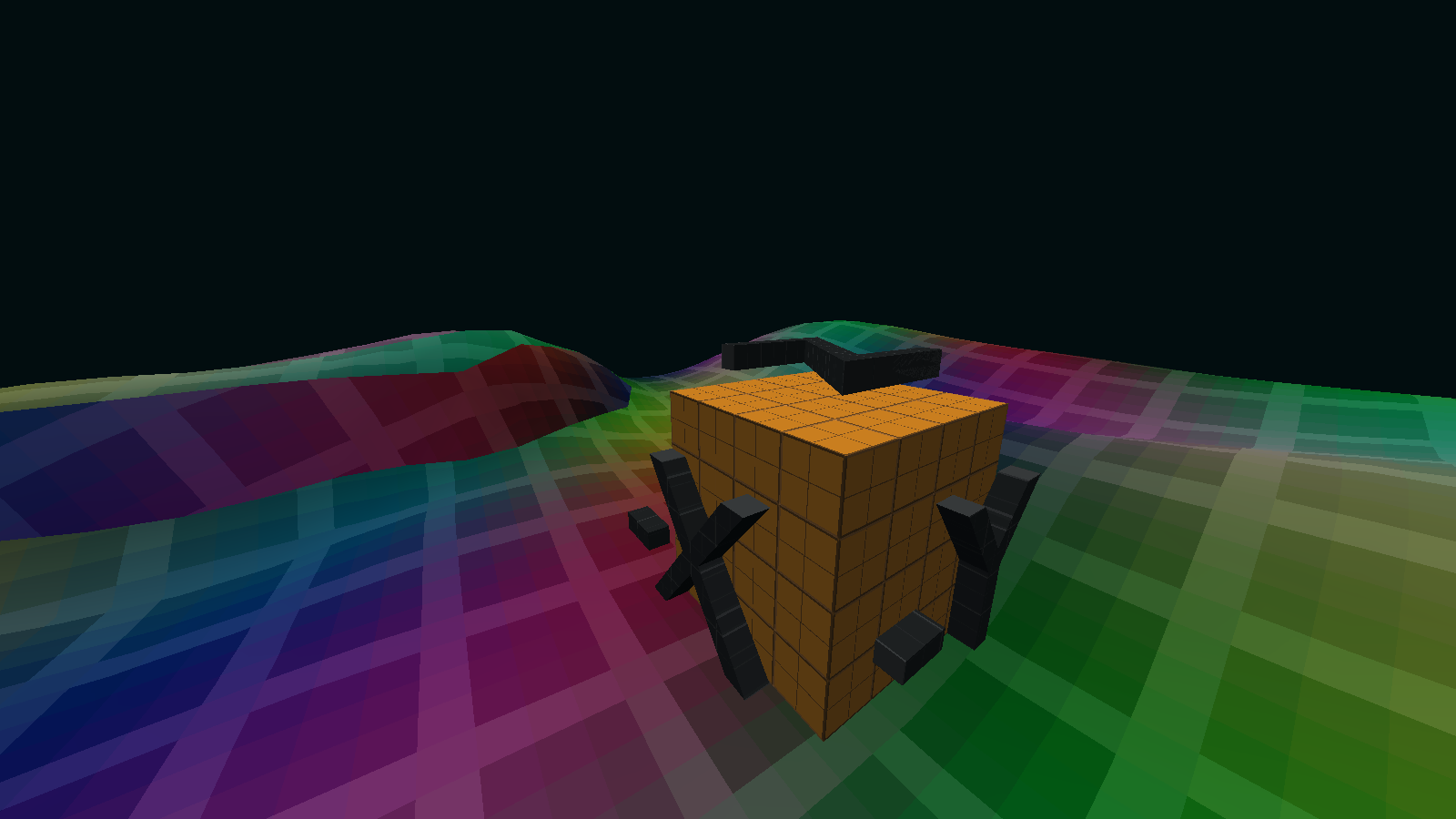 The missing texture texture survived!
The missing texture texture survived!
The asset system received level loaders but also writers. glTF was now the new format for levels. The map compiler got a -unitscale parametre, plane & brush maths were fixed further, and that was basically it.
Near the end of the work, preparations began for the client-server model.
August 2024
It started with the ECS. I spent a lot of time in the EcsResearch scratchpad project, experimenting with source generation and so on, trying to see how feasible it was to implement ideas from the entity system post.
September 2024
Needless to say, I found a way.
Soon enough, work on the client-server model began, together with the concept of bridges. Vectors were added to Parse as well as ReadOnlySpan versions of Parse.Float and Parse.TryFloat. There was one small issue: the client-server model also had me delete the game SDK code where it uses the renderer to draw things, obviously, because there wasn't a "StaticModel" component yet.
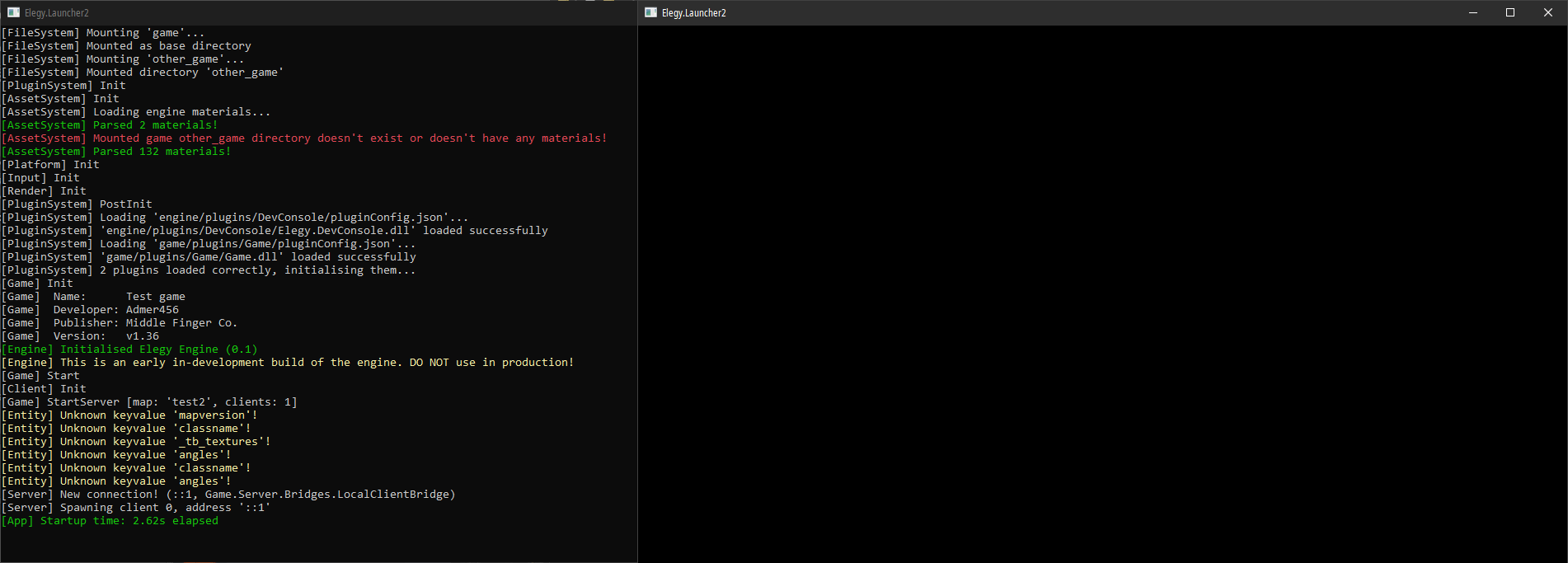
We're back to where we came from. Or are we just changing tyres?
Source-style IO was added, entity events were added, a basic player controller was set up, DeltaTimer got added, the protocol was being implemented. We got various components too: Player, Transform, Entity, Worldspawn, Trigger, Breakable, and ultimately, Elegy.TestGame got renamed to Elegy.Game. This marked the start of a new era for Elegy, where concrete work was being done on the game SDK, and the engine's systems were enough to support some of it!
I say "some", because there still needed to be plenty changes to be done engine-side, but for the most part, a lot of systems have remained mostly untouched.
Around this time, the website was published, together with a few idea posts:
October 2024
More ideas were added:
Eventually the website was separated into its own repository. The Game class got renamed to GameImplementation. Not a lot of work work was being done in this time period, but I was definitely thinking and writing stuff.
I also started working on API documentation generated from XML comments. I wrote a tool to transform Doxygen XML into Markdown for fun.
November 2024
Minor code cleanup and optimisation of ECS.Generator. Nothing particularly notable here, except the website got a subdomain on my personal website: elegy.microfox.dev.
December 2024
I started an experiment to redesign Lexer to use spans instead of strings. It turned out to use much less memory and performed 5x faster.
glTF models were flipped on the vertical axis, so I fixed that. AssetCache was added to the game SDK, EntityWorld was made static which made things a lot easier. The way entities were made was reworked to be more direct and robust.
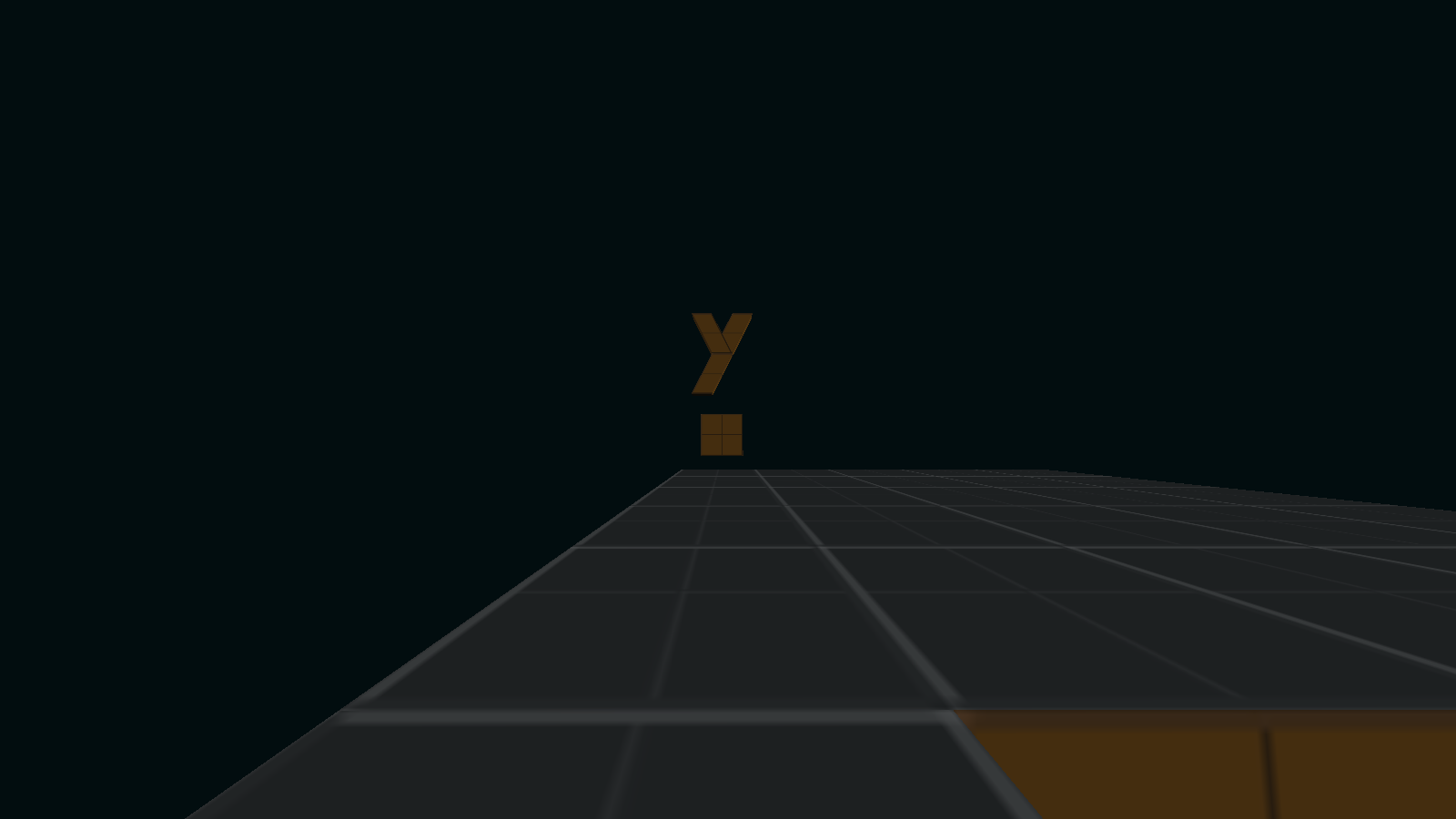
The initial orientation - Euler angles (0,0,0) - indeed points at +Y.
StaticModel was added, together with the ModelProperty smart property, and we could soon render stuff again. Debug line rendering was added as well as dynamic meshes. Brush models got supported, GuiLauncher2 was drafted.
Quaternion maths were added, and BepuPhysics started integration. Up until this point, the game SDK had no way to keep up with transform changes and vice-versa, so I added ServerTransformListenEvent. I'll have to refactor this later.
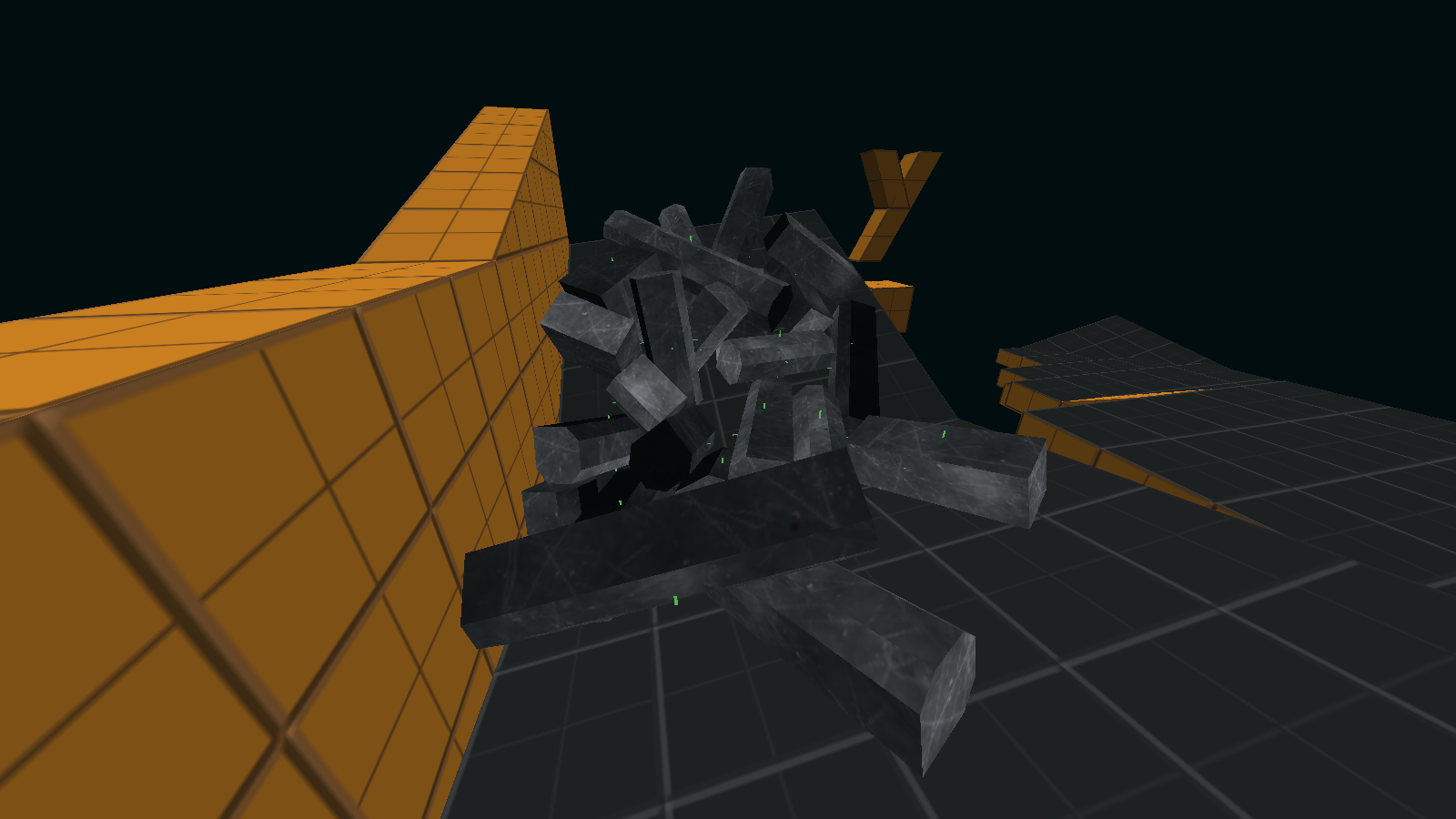
Oh the mess.
Future work
So, what remains to be done?
On the engine side:
- Console variables
- Autocompletion facilities for CVars and console commands
On the map compiler side:
- Use double-precision coordinates for brush geometry
- Implement spatial partitioning
- Implement smooth normals
On the game SDK side:
- Input system with keybids
- Settings system
- HUD
OnPlayerUseEvent- which will also need raycasting- Triggers
- Player controller
So yeah, I'll need to do an in-game UI system. Also gotta look into animation and audio, and I'm pretty sure that's what I'll be working on throughout 2025, alongside occlusion culling and lightmapping. See ya next year!
